10 Common Backyard Birds in Massachusetts (with Pictures)
Last Updated on
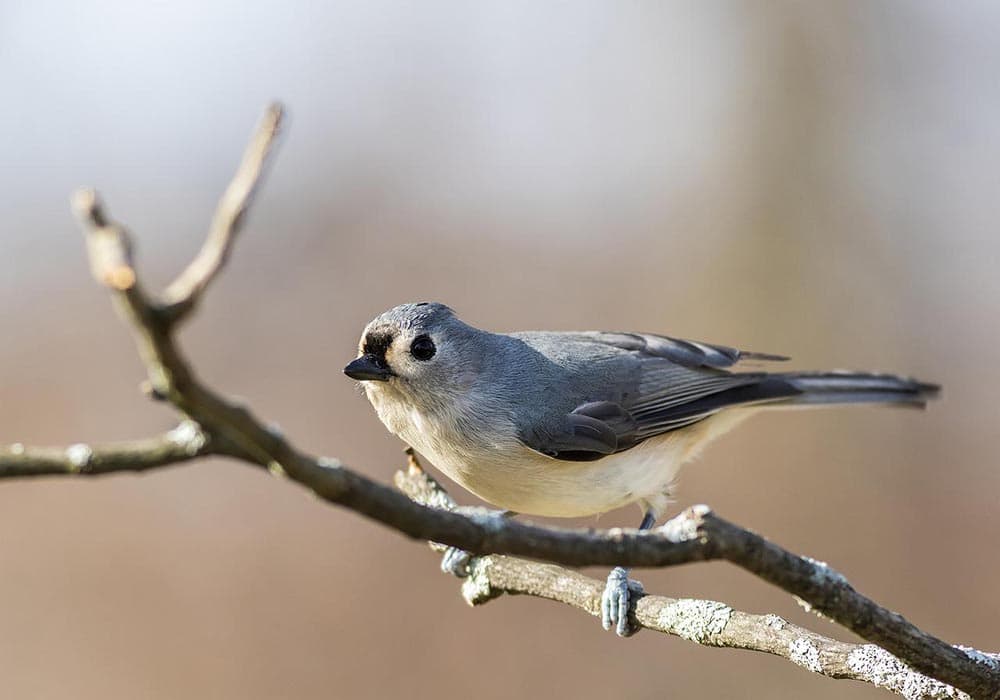
Massachusetts has a thriving wildlife ecosystem that is free for anyone with a backyard to enjoy, and enjoying the presence of birds is just one of the ways humans have learned to connect with nature. There are hundreds of bird species endemic to Massachusetts that you can see, but here are just 10 of the most common backyard birds you can see in the Bay State.

The 10 Most Common Backyard Birds in Massachusetts
1. Northern Cardinal
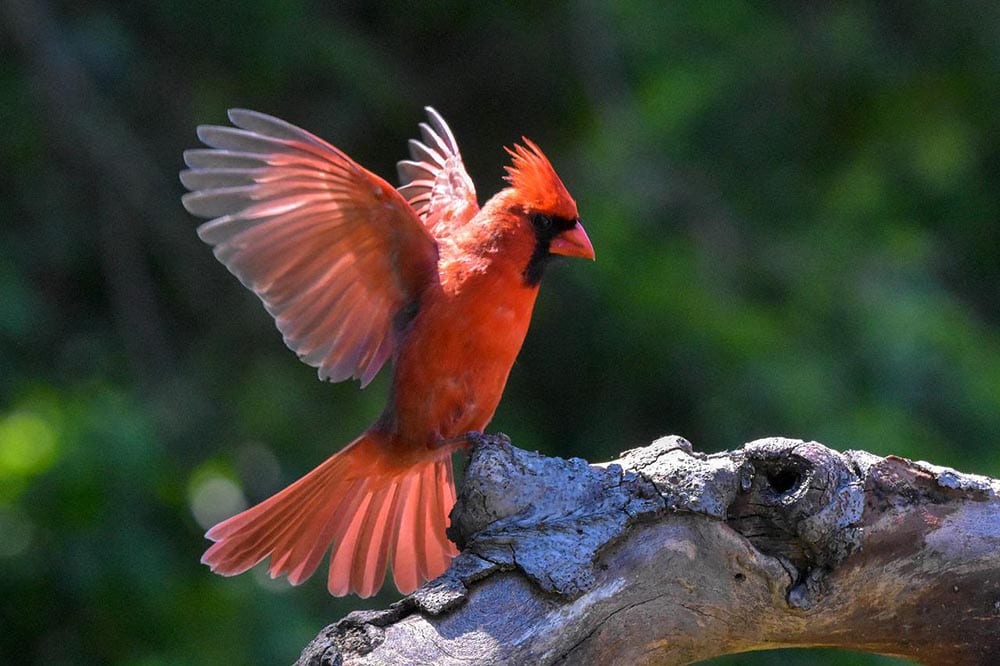
Scientifically, the Northern cardinal is called Cardinalis cardinalis, and it is the face of the cardinals of the world. It’s a relatively small bird, measuring just 8.3–9.1 inches in length with a wingspan of just 9.8–12.2 inches.
The Northern cardinal might be one of the most recognizable birds in the Bay State and many birdwatchers, serious and casual, watch these year-round birds as they build nests in the spring and prepare for winter in the fall.
2. Black-Capped Chickadee

The black-capped chickadee is another excellent bird to see in Massachusetts year-round. They are tiny birds with a body length of just five inches on average and unable even to eclipse one ounce of body weight. In addition, their wingspan is as tiny as the rest of the bird, clocking in at 6.3–8.3 inches.
These chickadees are easily recognizable by the black cap on their head with striking solid white cheeks. They are commonly seen darting back and forth between cover and bird feeders and can be pretty bold for such small birds!
The black-capped chickadee is the Massachusetts state bird, and you’ll be able to see these cuties no matter what time you come to visit Massachusetts!
3. Blue Jays
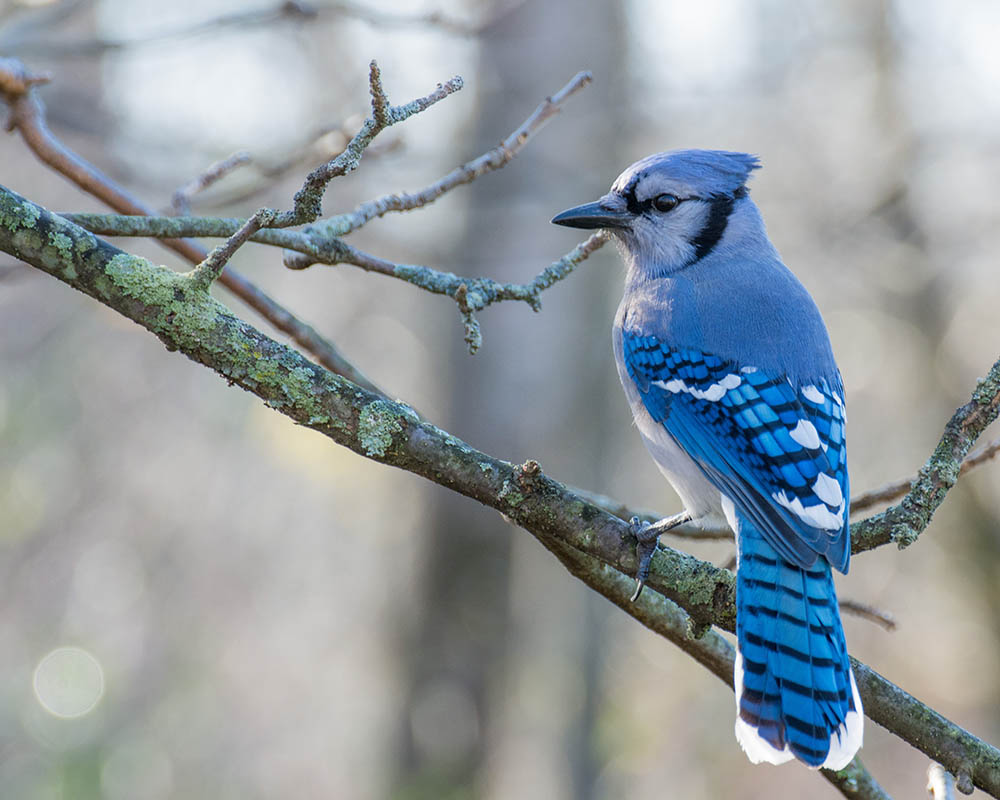
Blue jays are famous bird-watching birds because their bright blue feathers can capture just about anyone’s attention! They’re popular both in and out of Massachusetts for their beautiful blue crests and white chest and belly feathers.
These are some of the first birds you’ll encounter when you start your bird-watching journey since they’re so easy to find and identify. Even veteran birdwatchers love these birds since they represent an essential cornerstone of beginner bird-watching.
4. Tufted Titmouse

Like cardinals, titmice have a small crest on their head to help you identify them when they make a pit stop at your bird feeder. They’re identifiable from their silvery-gray top halves and lighter, off-white bottoms. Tufted titmice can be found year-round in Massachusetts. So, look for these little joys around your bird feeder!
5. Eastern Bluebird
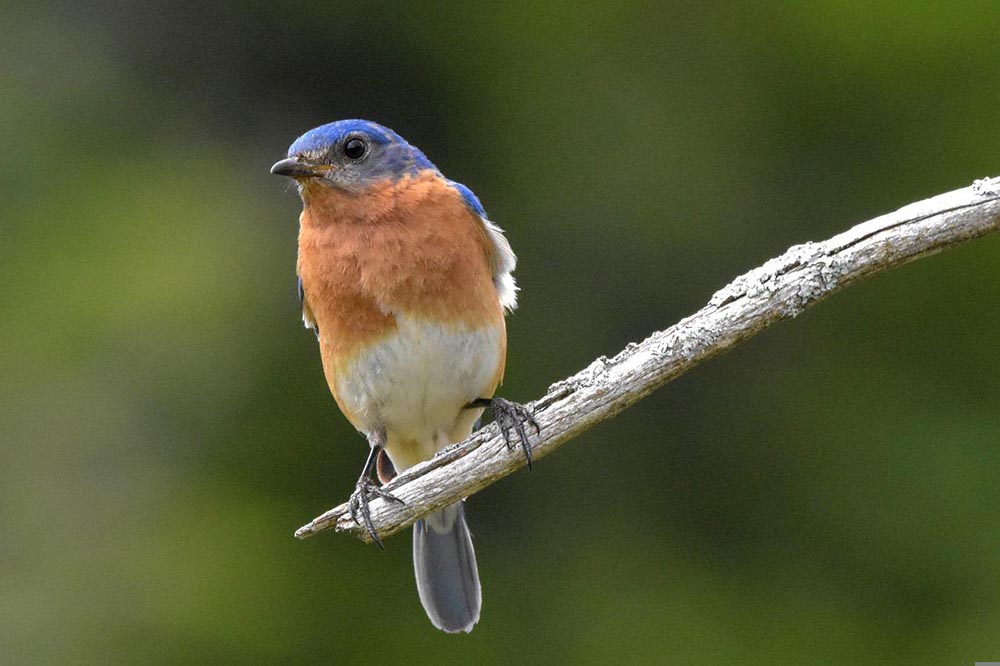
Eastern bluebirds might have ‘blue’ in their name, but they’re nothing like blue jays. They have deep cobalt blue feathers over most of their body with an orange-red breast and white bottoms. The tips of the feathers may be darker blue, almost gray.
6. Song Sparrow
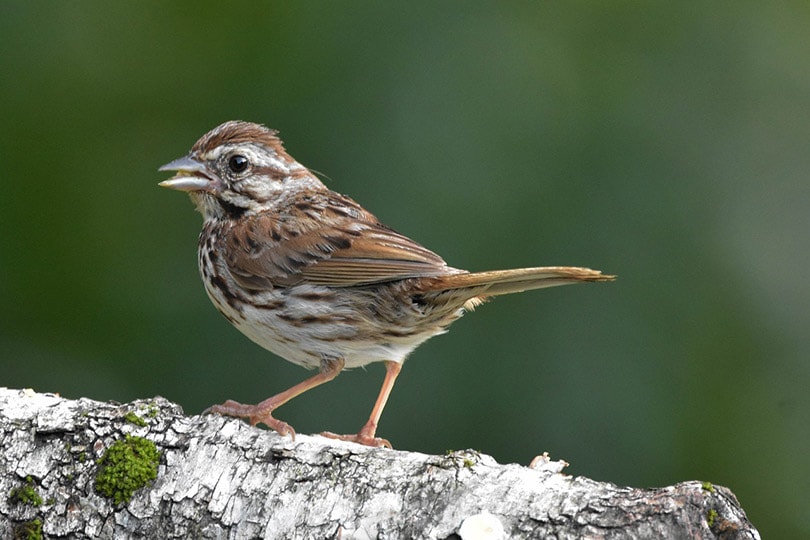
Song sparrows are shared all over North America, including Massachusetts. They can be seen all year round, and their plumage may differ from the sparrows you’re used to if you’re traveling from another part of North America, as the song sparrow’s feather patterns differ from region to region.
7. American Robin
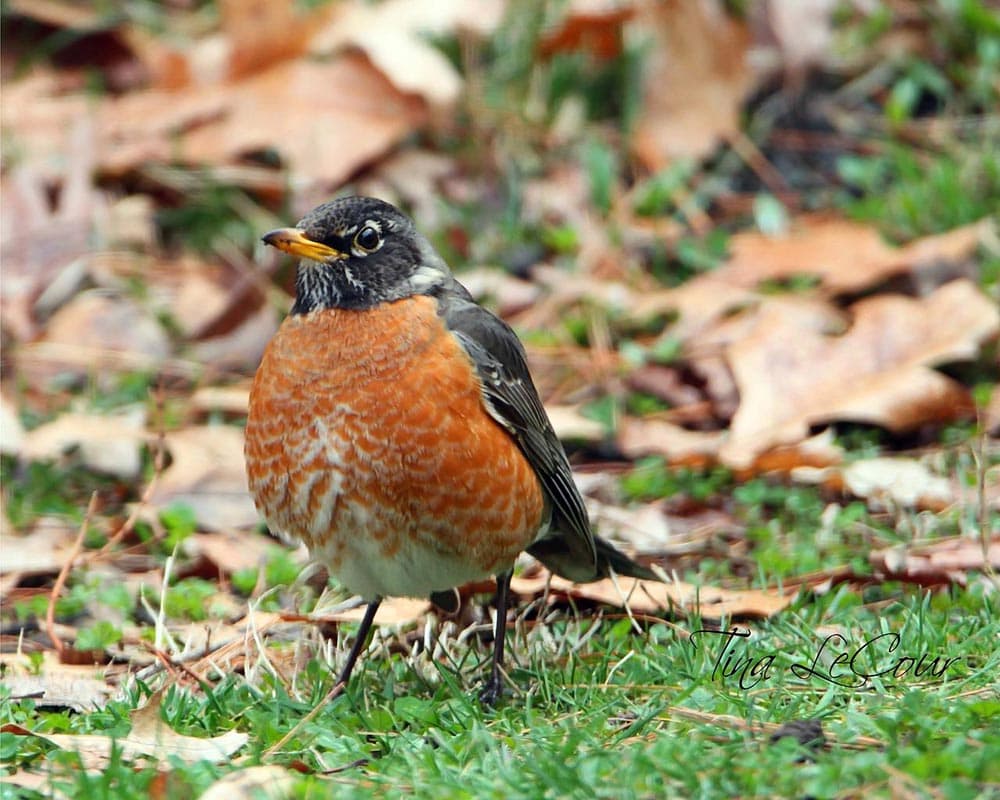
American robins are common in backyards around America and can mostly be seen hopping about in the grass, searching for worms and other invertebrate prey to eat. They do not typically eat seeds, so it’s less common to see American robins around feeders compared to other seed-eating birds.
8. Mourning Dove
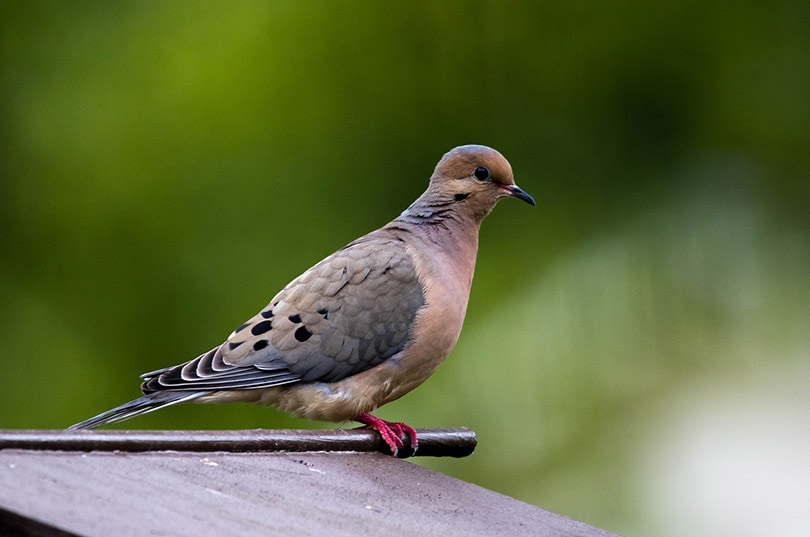
Mourning doves are about the same size as a robin and often sit atop telephone wires or are grouped up in trees. Mourning doves are primarily gray, but they feature black spots at the top, a soft peachy color on the bottom, and pinkish legs. Their soft cooing is a staple of most backyards, and while most people aren’t consciously aware of their presence, they’re an essential part of our audio ecosystem. They can be found year-round in Massachusetts.
9. European Starling
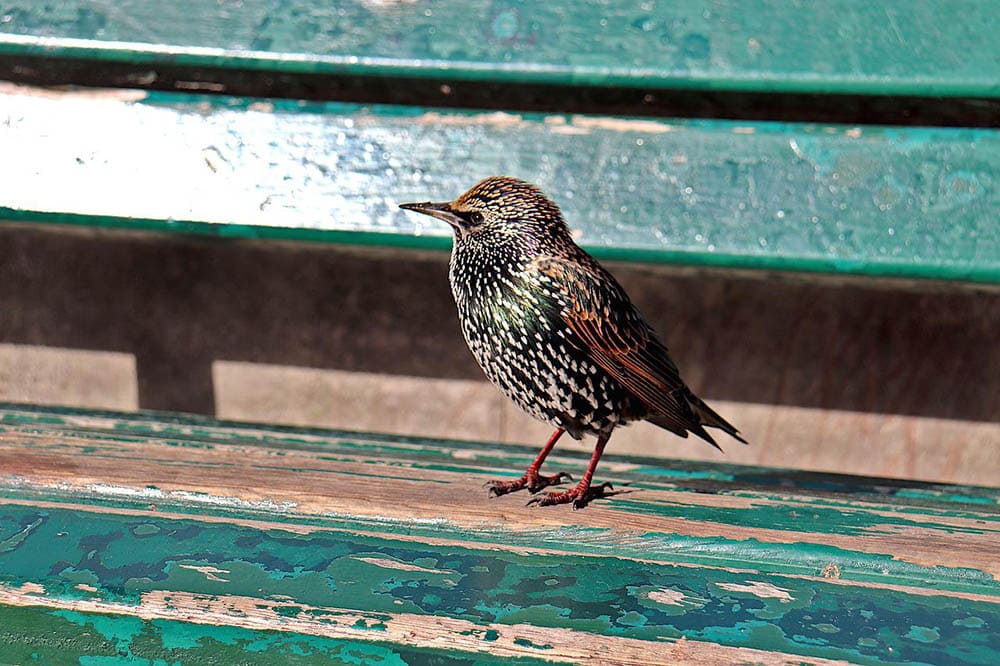
While it might seem like a mistake at first, in the 1890s, 100 European starlings were set loose in New York, and since then, they’ve made a home out of nearly every place in North America. They’re a relatively vicious invasive species that will overtake feeders, destroy other birds’ nests, and even kill the young of other birds.
You can identify them with dark feathers with white specks on their backs and wings with yellow beaks and feet. Despite their generally objectionable behavior, Starlings are quite pretty, and in the right light, their feathers seem to take on a purple and green iridescence.
10. Dark-Eyed Junco
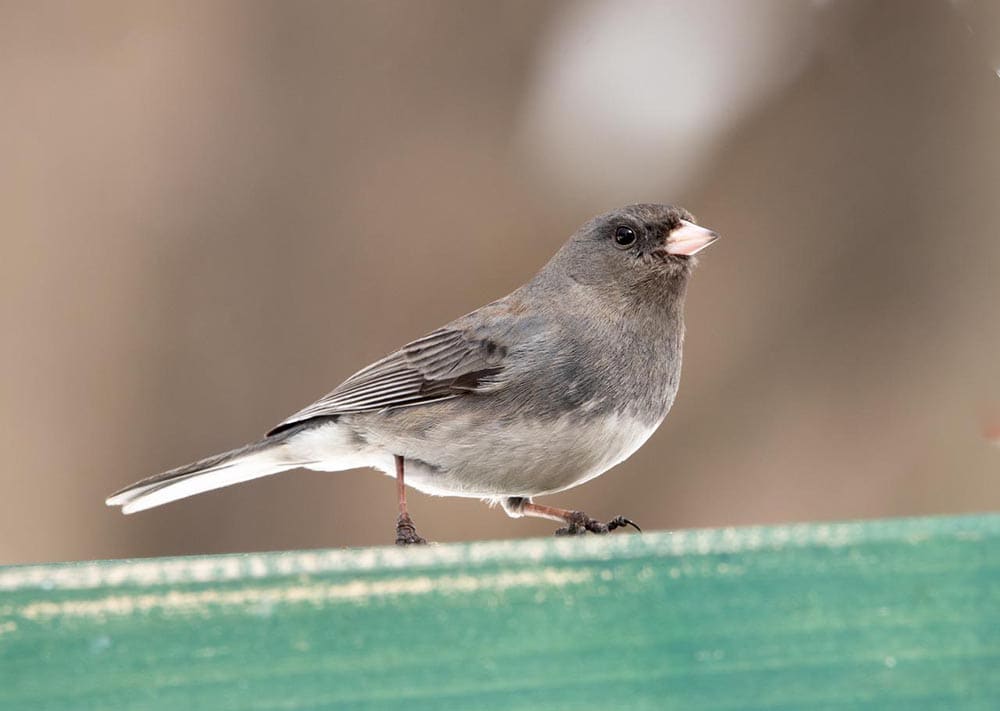
The juncos of the Eastern U.S.A is a dark-gray “slate-colored” variety of the junco bird. They have a dark-gray color on the head, chest, back, wings, and tail with a white underbelly and undertail. Females may appear brown instead of gray. When looking for Juncos in the wild, look for their rounded body shape and pale pink beaks. They’re most commonly seen in forests and wooded areas year-round, where they can be seen hopping around on the ground.
How to Attract Birds to Your Yard
Suppose you’re one of the lucky folks who have a yard where they can bird watch, consider putting out various feeders to attract all kinds of birds. Here are some tips for attracting a diverse collection of birds to your yard to look at!
Put Out Bird Feeders
Before putting out feeders, observe what kind of birds you see most often in your yard and tailor your seed choices to the birds you frequently visit. A simple tube or window feeder will do for your first bird feeder. Just ensure that this feeder is squirrel and chipmunk-proof. Otherwise, those little trouble-makers will ransack your bird feeder and leave the birds with nothing to eat!
Give Them a Water Source
Birds like water for both drinking and bathing. Giving birds a water source like a pedestal bath or fountain can attract them to your yard to perform some daily cleaning and get a quick drink.
Set Up Bird Houses
Many birds will gladly take up residence in man-made structures when offered, and these can also help protect the natural wildlife by keeping the ecosystem safe and balanced.
Grow Native Plants
Many birds rely on nuts, berries, and seeds from native plants. Growing these plants in your yard will attract birds looking for a snack! These plants also attract caterpillars and other insects that nesting birds can feed to their young, making your yard an ideal place for birds to raise their young!

Final Thoughts
Seeing birds outside is one of life’s little pleasures, and there are hundreds of other birds that you can see in Massachusetts! We’ve selected some of the most common birds you might see out back, but if you stay long enough, you’ll see hundreds of birds that weren’t mentioned here too!
See Also: 15 Types of Black Birds in Massachusetts (With Pictures)
Featured Image Credit: rusticpix_cheryl, Pixabay
About the Author Luxifa Le
Luxifa is a freelance writer with a passion for animal science and technology. She loves to share the world of animal science with people to help them make informed decisions for themselves and their pets. Knowledge is power and she loves to help everyone become the most informed they can be.
Related Articles:
Monocular vs Telescope: Differences Explained (With Pictures)
10 Types of Hummingbirds in Arkansas (With Pictures)
8 Types of Hummingbirds in Nebraska (With Pictures)
5 Types of Hummingbirds in Idaho (With Pictures)
3 Types of Hummingbirds in Mississippi (With Pictures)
8 Types of Hummingbirds in Kansas (With Pictures)
5 Types of Hummingbirds in West Virginia (With Pictures)
5 Types of Hummingbirds in Ohio (With Pictures)
